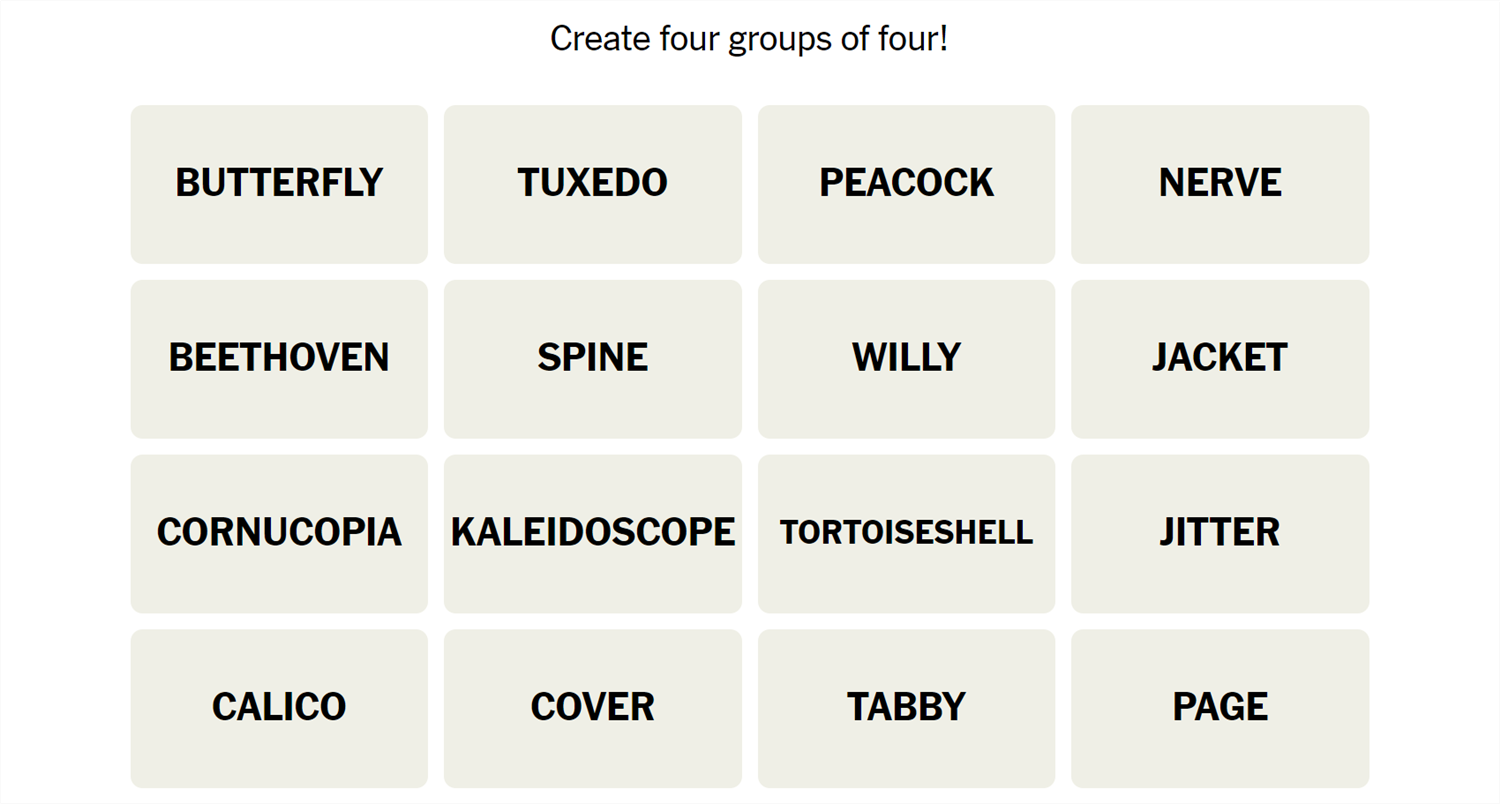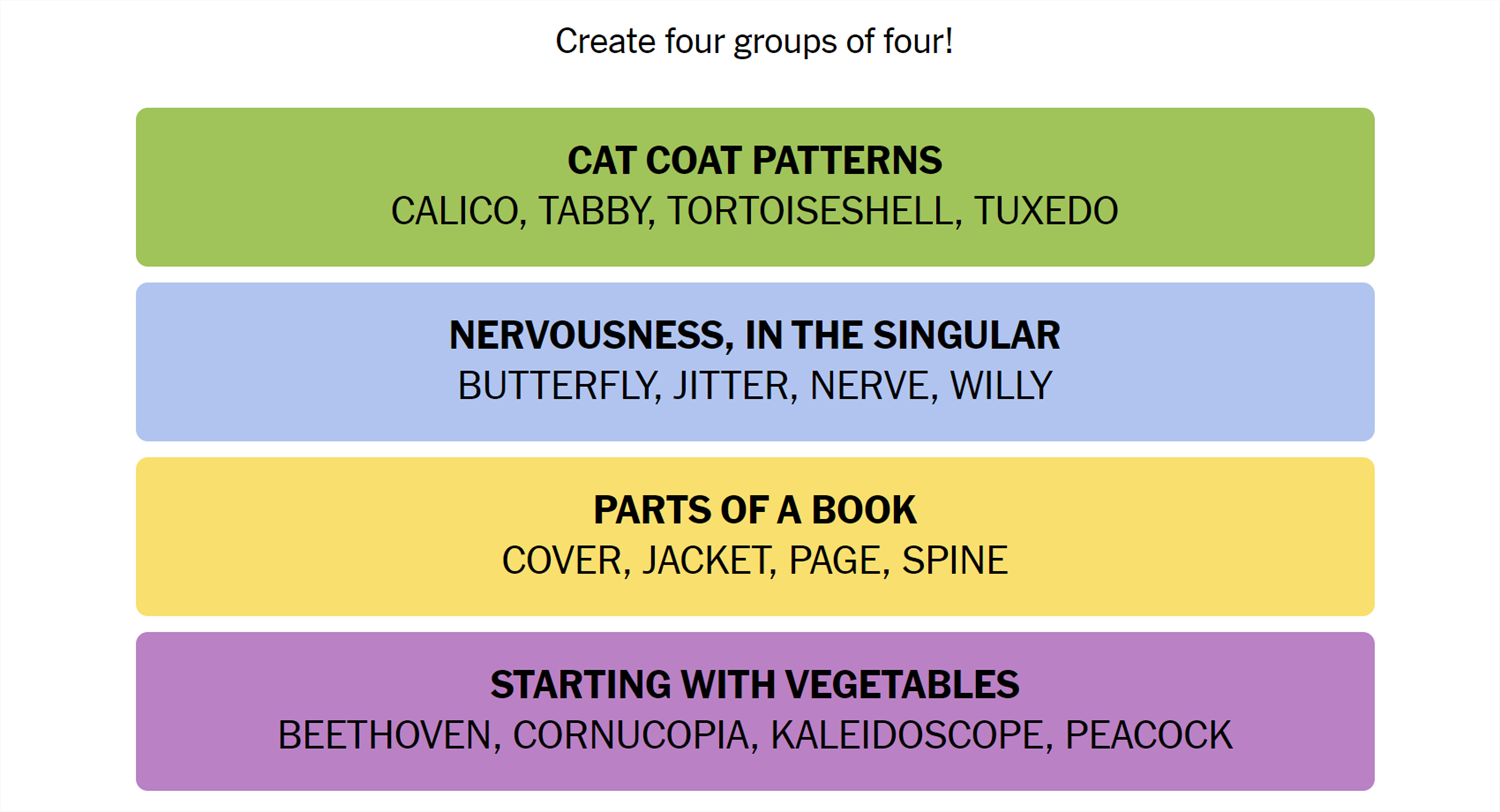Connections is a game from the New York Times that challenges you to find the association between words. It sounds easy, but it isn’t—Connections categories can be almost anything, and they’re usually quite specific. If you need a hand getting the answers, we’ve got you covered.
What Is Connections?
Connections is a game from the New York Times. The objective is simple: sort 16 words into groups of 4. Each group of words will be connected by some common idea or theme. That common element could be anything. We have seen everything from games that rely on the number of letters in the words to categories that require you to spot an extra letter at the end of the word. Sometimes they’re references to economics, other times they reference fairy tales. There is no telling what sort of association there will be between words.
Once you’re confident you understand the connection, select 4 words, then hit “Submit.” You have only four attempts in total, so don’t be too guess-happy.
Hints for Today’s Connections Groups
Here are a few hints for the 413th Connections game to get you started:
- Yellow: Anatomy of a tome?
- Green: Meow.
- Blue: Anxiety.
- Purple: Always eat these words.
If you still need help, the actual group names are:
- Yellow: Parts of a Book.
- Green: Cat Coat Patterns.
- Blue: Nervousness, In the Singular.
- Purple: Starting with Vegetables.
Today’s NYT Connections Answers
Parts of a Book (Yellow):
Cover, Jacket, Page, Spine
Cat Coat Patterns (Green):
Calico, Tabby, Tortoiseshell, Tuxedo
Nervous, In the Singular (Blue):
Butterfly, Jitter, Nerve, Willy
Starting with Vegetables (Purple):
Beethoven, Cornucopia, Kaleidoscope, Peacock
How Did We Solve This Connections Game?
July 28th was another pretty straight forward game; the only tricky one was Purple, but it relied on a pretty common trick.
The first words I spotted were calico, tabby, tortoiseshell, and tuxedo. It hit me instantly, probably because there was a cat attempting to mess with my keyboard as I was looking at the words.
Butterfly and nerve made me think of anxiety, though it was odd that they were singular. However, keeping with the theme, jitter(s) and willy(ies) seemed like reasonable choices. Blue was “Nervousness, in the Singular,” which matched the observation that the words were curiously singular.
Cover, jacket, page, and spine are all parts of a book—no crazy jumps there. They were in the Yellow group, “Parts of a Book.”
That left Beethoven, Cornucopia, Kaleidoscope, Peacock in Purple. As often as not, Purple involves some relationship between the words themselves rather than the meaning of the words, and this was one of those days. Searching for a link between Beethoven and kaleidoscope wouldn’t get you anywhere. However, the words all have one thing in common: they all start with a word that is a vegetable. Beet, corn, kale, and pea! The group name was “Starting with Vegetables.”
How Do You Guess Connections Groups?
There is no quick, reliable way to approach Connections like there is with Wordle, since Connections isn’t algorithmic. However, there are a few things to keep in mind that can help.
- Look for similar parts of speech. Are some words verbs and others nouns? Are some adjectives? Try mentally grouping them based on those categories and see if any other patterns jump out at you.
- Are the words synonyms? Sometimes categories will just be synonyms for a phrase, or very close to synonyms. Don’t rely too closely on this, though. Occasionally, Connections will deliberately throw in words that are sometimes synonyms to mislead you.
- Try saying the words. Sometimes, saying the words helps. One puzzle we saw included the words go, rate, faster, clip, pace, speed, move, commute, and hurry—all of which are obviously related to the idea of motion. However, when you say them, it becomes a little more obvious that only four (go, move, hurry, faster) are things you’d actually say to prompt someone to get moving.
- Expect the red herring. Connections usually has words that could be plausibly, yet incorrectly, grouped together. Take the words Bud, Corona, and Light, as an example. You might instinctively see those three words together and assume they’re lumped together in a category related to beer—but they weren’t.
- Look for distinct words. If a word on your board doesn’t have multiple meanings or can really only be used in one context, try using that word as the basis for a category.
- Shuffle the board. Sometimes, moving words around will help you look at them in new ways.
If you didn’t solve this one, don’t feel too bad—there’s always tomorrow! And those words may align with a topic you’re interested in, giving you a leg up on the competition.





